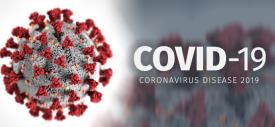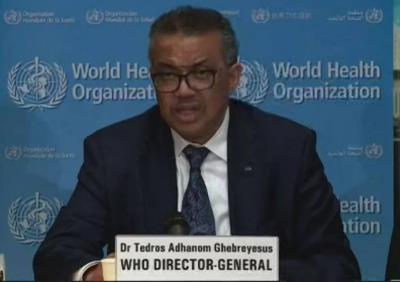 The present situation
The present situation
Approximately ten weeks after the first recognition of COVID-19 infection in China, the disease has been reported in sixty-one nations. At the present time, the highest number of cases have occurred in China with approximately 80,000 infected and 3,000 fatalities. Second is Italy with 2,500 cases and 79 fatalities and Iran with 2,300 cases and 77 fatalities. Korea has had 5,700 cases with 35 fatalities and Japan has diagnosed 1,000 cases. At the present time the U.S. has positively diagnosed 118 cases with nine fatalities
It is noted that the incidence rate (new cases within a specific time) in China is declining, attributed in large measure to the draconian measures enforced by the central government on affected provinces. Approximately 50 million people were under lockdown for at least three weeks although  workers are returning to factories and offices but under strict surveillance. It remains to be seen whether an upsurge in new cases will occur following relaxation of quarantines. It is generally acknowledged that Western nations could not impose the same restrictions that appeared effective in China.
workers are returning to factories and offices but under strict surveillance. It remains to be seen whether an upsurge in new cases will occur following relaxation of quarantines. It is generally acknowledged that Western nations could not impose the same restrictions that appeared effective in China.
With respect to the U.S., initial cases were acquired overseas but during the past two weeks it is apparent that community spread of the SARS-CoV-2 virus (as designated by the WHO) is clearly transmissible among people in close contact. Preliminary information from China suggest that 80 percent of cases are extremely mild to moderate, 14 percent result in severe complications and 6% of patients with predisposing conditions experience life-threatening pneumonia. Fatality rates in China vary from 0.7% to 5% depending on province. It is clear that without knowing the actual number of individuals infected by applying retrospective serologic surveys, it is impossible to determine the denominator to be used to establish rates of infection and fatality. A preliminary study conducted in Guangzhou Province indicated that the infection rate was in fact low, but the situation may be different in Hebei Province. Realistically, authorities in the U.S. do not know the extent of infection given the slow start to antigen (virus) assay. A more precise knowledge of the extent of infection over the past two weeks will evolve and will be necessary to guide preventive measures and policies.
Despite the predictions of pundits, economists, politicians and other amateur epidemiologists, the nation should rely on authoritative statements based on past experience with SARS and influenza outbreaks and science. Key personnel include Dr. Anthony Fauci, Dr. Nancy Messonnier and Dr. Clifford Lane of the NIH, Dr. Scott Gottlieb, previously Commissioner of the FDA, Dr. Jerome Adams, Surgeon General and Dr. Robert Redfield of the CDC. Statements by White House personnel, at variance with established scientific fact, aimed at downplaying the severity of the situation for political purposes represent a disservice to our nation.
Effects on the Poultry Industry and Society
The possible impacts on the egg industry will relate to the extent of quarantines and possible restrictions on interstate transport. Although there is no indication of U.S. policy on quarantines it is accepted that we will not follow the lead of China. Despite some inconveniences farms will receive ingredient and eggs will be delivered to retail and egg liquid to manufacturing plants. If however, the infection assumes epidemic proportions, obvious impacts on logistics and ongoing operations including the availability of workers will emerge as restraints.
Of immediate concern is a disruption in the supply chain for critical components. The U.S. poultry industry is relatively secure with respect to vaccines for poultry diseases. Since a high proportion of vitamins and other compounds emanate from China, delays in manufacture and supply of nutrients may cause problems. Port delays in China during mid-January extending through February have reduced the volume of broiler feet and parts shipped although the congestion at points of entry appears to be easing. Hong Kong is the largest importer of U.S. shell eggs but at this stage there does not appear to be any disruption in the chain of delivery. Exports to our USMCA neighbors, Canada and Mexico should not be affected unless one of the three nations imposes border restrictions that would be deleterious to all commerce and agriculture.
The most immediate risk facing the egg industry appears to be maintaining a productive work force at both the farm and plant levels. Hopefully the suggestions provided by CDC and reiterated in EGG-NEWS that all personnel should have received the 2019 influenza vaccine have been followed. This is relevant since a late winter or early spring upsurge of influenza will complicate recognition and diagnosis of COVID-19.
An effective and proven safe vaccine may only be available for field deployment during the late summer of 2021, given time required for development and testing. Egg producers should advise workers to follow common sense precautions including frequent hand washing, avoiding close contact with co-workers and abstaining from attending events involving a high concentration of participants including concerts, sports and political rallies.
It is evident that if COVID-19 becomes epidemic in the U.S. consumers will shun large supermarkets and malls shifting purchases of eggs to smaller stores. This will require more flexible delivery programs. Sales of eggs and products in restaurants will probably fall, compensated by greater consumption of home-prepared meals or the use of drive-through lanes at QSRs.
It is still too early to predict social, political and economic effects of COVID-19. What we will need is clear and concise direction based on sound scientific and epidemiologic principles. This is certainly no time for the blame game or advocacy of quick-fixes and nostrums manifested by misinformation on social media.
Hopefully the U.S. will be spared an extensive outbreak and that our medical resources will be able to treat the elderly, the immunosuppressed and those predisposed to respiratory infection.